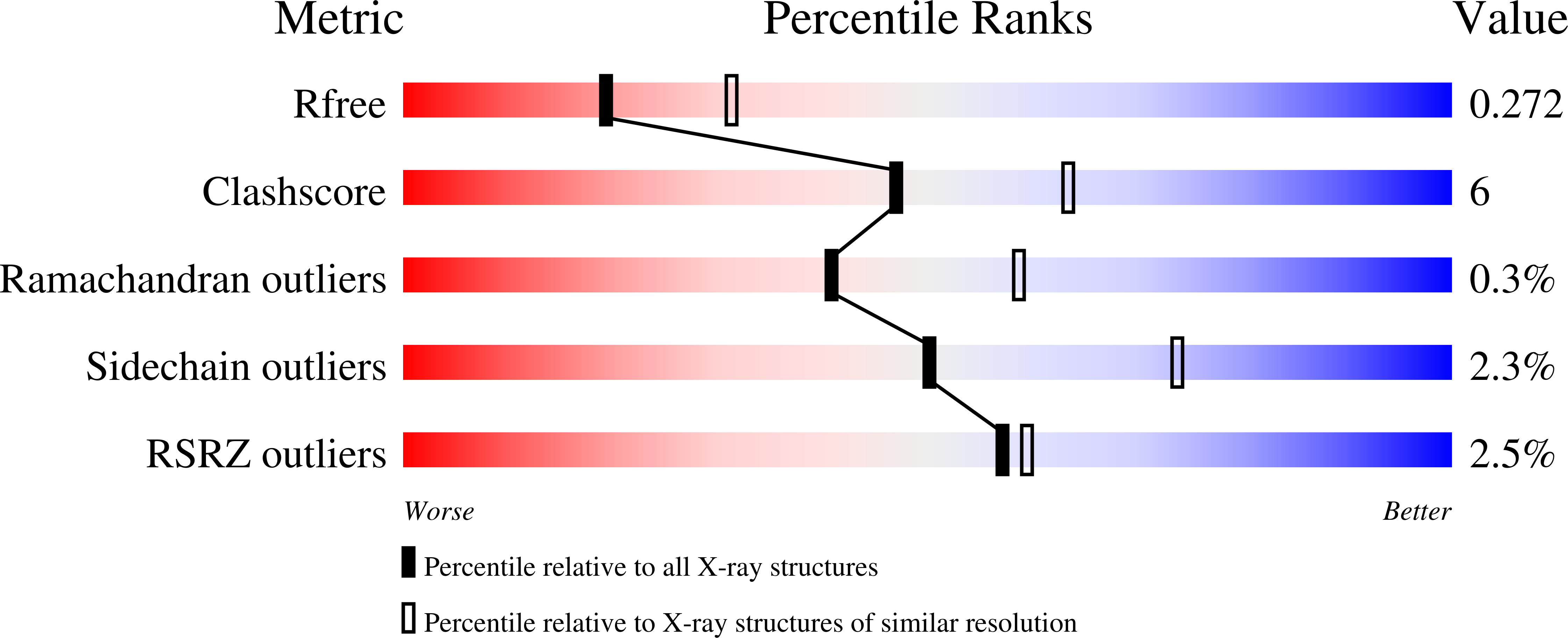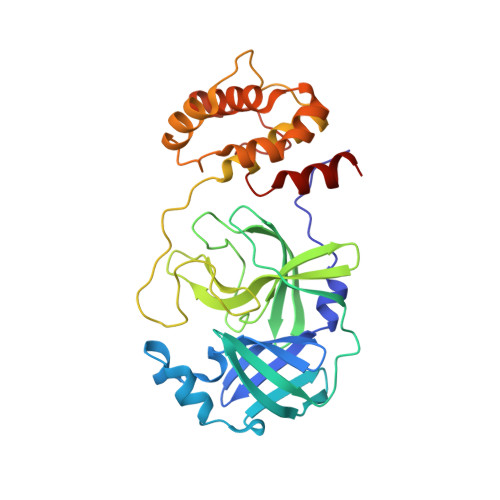Structural basis of nirmatrelvir and ensitrelvir activity against naturally occurring polymorphisms of the SARS-CoV-2 main protease.
Noske, G.D., de Souza Silva, E., de Godoy, M.O., Dolci, I., Fernandes, R.S., Guido, R.V.C., Sjo, P., Oliva, G., Godoy, A.S.(2023) J Biol Chem 299: 103004-103004
- PubMed: 36775130
- DOI: https://doi.org/10.1016/j.jbc.2023.103004
- Primary Citation of Related Structures:
8DZ0, 8DZ1, 8DZ2, 8DZ6, 8DZ9, 8DZA, 8E1Y, 8E25, 8E26 - PubMed Abstract:
SARS-CoV-2 is the causative agent of COVID-19. The main viral protease (M pro ) is an attractive target for antivirals. The clinically approved drug nirmatrelvir and the clinical candidate ensitrelvir have so far showed great potential for treatment of viral infection. However, the broad use of antivirals is often associated with resistance generation. Herein, we enzymatically characterized 14 naturally occurring M pro polymorphisms that are close to the binding site of these antivirals. Nirmatrelvir retained its potency against most polymorphisms tested, while mutants G143S and Q189K were associated with diminished inhibition constants. For ensitrelvir, diminished inhibition constants were observed for polymorphisms M49I, G143S, and R188S, but not for Q189K, suggesting a distinct resistance profile between inhibitors. In addition, the crystal structures of selected polymorphisms revealed interactions that were critical for loss of potency. In conclusion, our data will assist the monitoring of potential resistant strains, support the design of combined therapy, as well as assist the development of the next generation of M pro inhibitors.
Organizational Affiliation:
Sao Carlos Institute of Physics, University of Sao Paulo, Sao Carlos, Brazil.
















